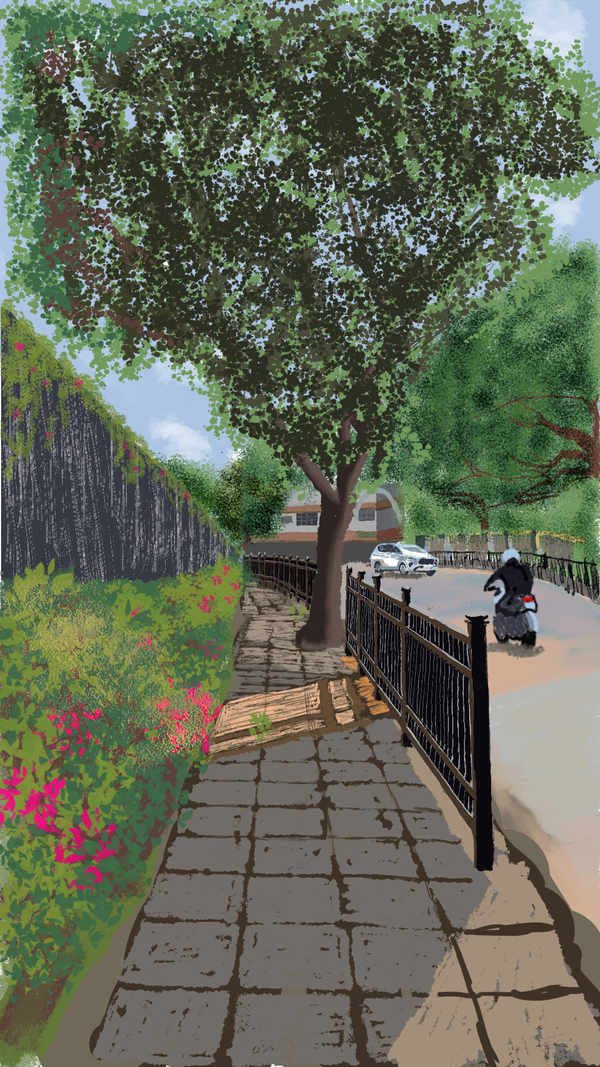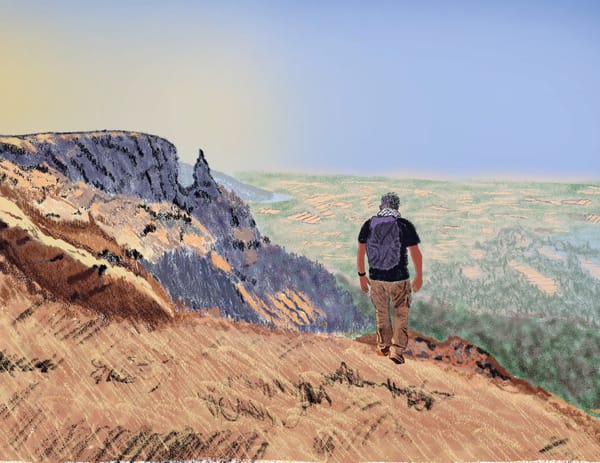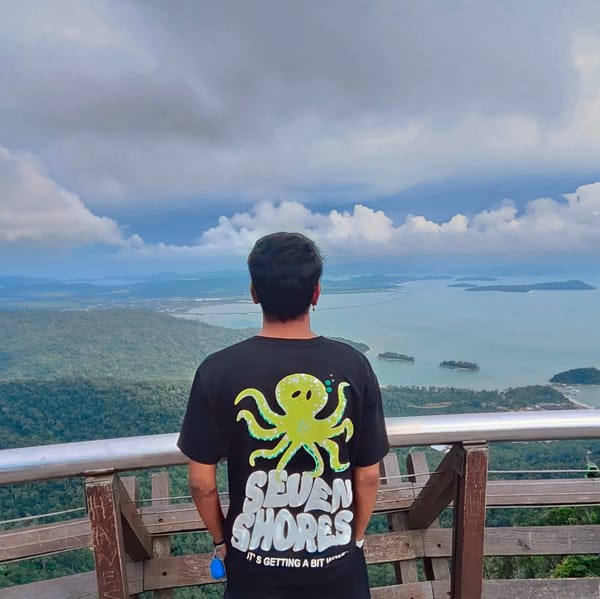Cycling to Aware to Bamandev Temple and a new fort - Mardangad
The Konkan coast is lined with sea forts that were built to protect it over the years. I have been visiting and documenting the forts around Mumbai as part of my Cycling to Historical Sites project.
To the north of Mumbai starting from Tarapur Fort close to the Gujarat border, there are 14 forts along the coast covering a distance of approximately 100 km:
- Tarapur Fort
- Dahanu Fort
- Shirgaon Fort
- Mahim Fort
- Kelve Fort
- Alibaug Fort
- Yedvan Fort
- Arnala Fort
- Vasai Fort
- Dharavi (Uttan) Fort
- Madh Fort
- Bandra Fort
- Mahim Fort
- Worli Fort
Then as you go around the Mumbai island into the Thane creek, we have seven forts covering a distance of approximately the same 100 km along the coast:
- St. George Fort
- Sewri Fort
- Belapur Fort
- Gharapuri (Elephanta) Island
- Dronagiri Fort at Uran
- Kolaba fort at Alibaug
- Korlai fort
In this list, between the Dronagiri fort at Uran and Kolaba fort at Alibaug, there is a wide stretch of about 40 kms that seems to be left unguarded. In addition, just south of Uran is the Karanja creek where the Patalganga river terminates after snaking its way down from the Sahyadris at Khopoli.
It seemed odd that this creek was left unguarded as it could have been an easy entry point to the mainland. I was sure there must have been some structure however small that was built in this area to guard the mouth of the Patalganga.
To investigate, I set about on one weekend in July 2016 to go and explore the area.
I cycle south from Chirner, where I had visited recently to see the Gadhegals and reach a village called Aware near the mouth of the Patalganga river.
When I reach Aware, there is a small lake with a well next to it. It is still early on a Sunday morning and there is nobody around. I go over to a small shop to ask if anyone knows of some fortification in that area.
There, I meet with Sadanand Gavane, the local school teacher. He is fascinated to learn that I had cycled all the way from Mumbai in search of a fort. To my pleasant surprise, he confirms that indeed there is a hillock deep into the mangroves near the mouth of the river where there is some fortification. The locals call it Mardangad. The location is better known for the Bamandev Temple next to the hillock.
The villagers debate for a while about who would accompany me to the temple and finally decide on Ramchandra Gavane who agrees to spend a few hours of his Sunday morning to show me the way to the temple and the hillock.
He leads me through Aware village to the south into the rice fields, a path that passed the crematorium.
Soon we are wading through the rain water that has filled up the rice fields. My cycling shoes that were already wet with the rains now become full of mud.
We meet two brothers who are returning from the temple. The one on the left is the designated priest (pujari) for the temple and his brother goes along to catch fish from the marshes using the handmade contraption that he is carrying
We then come to a place where the road widens. Ram tells me that this is designated as the official road that is still incomplete as some of the farmers are not willing to release their lands for the road.
We walk along the path from where we can see the rice fields extend into the distance. The path skirts a small hill range - more like a large series of mounds, actually.
At one point, the mud is so deep that Ram loses one of his slippers in the mud. He spends a few minutes digging out his slippers before we set out again.
After walking about 2 km from Aware, Ram points to a small hillock on the right that is overgrown with a large banyan tree. He identifies this hillock as the place where there is a fortification that they call as Mardangad.
We make our way through the huge aerial roots of the banyan tree to find a small area in the center of the hillock that is cordoned off with a stone wall that is now almost entirely disintegrated.
On the far side of the hillock, there is a flag pole where a flag is hoisted by the locals on all special occasions and especially on Maha Shivratri.
Maha Shivaratri is a Hindu festival celebrated annually in honor of the God Shiva. There is a Shivaratri in every lunar month on its 13th night /14th day, but once a year in late winter (February/March) and before the arrival of spring, marks Maha Shivaratri which means "the Great Night of Shiva" - (ref)
The view of the coast from here is quite clear. It was foggy due to the rains, but otherwise Ram said that one could see all the way to Revas - the jetty on the opposite side of the estuary. The hill one can see to the right of center is the Dronagiri hill where the Dronagiri fort is located.
Next, Ram takes me back into the maze of the banyan tree branches to show me something whose existence only a few people know. I am curious and follow him as he goes deep into the tree's interior.
Deep inside the thick aerial roots, is a small temple of sorts, with a stone carved idol of a Goddess Bhavani sitting on a tiger or a lion.
Goddess Bhavani is held in great reverence throughout the state of Maharashtra. She is considered to be an embodiment of Ugra or ferocity, as well as a Karunaswaroopini - an embodiment of mercy.
Bhavani was the tutelary deity of the Maratha leader Shivaji, in whose veneration he dedicated his sword, Bhavani Talwar
- [ref]
We then climb down the hillock from the south. A short distance away we see the Bamandev Temple.
The climb down is slippery and I carefully bring myself and the cycle down the hillock without injuring either of us.
There is a small path covered in grass that Ram hastens along, and I follow him with my cycle in tow. The temple is in the middle of the mangroves and one has to follow the path to avoid the marsh.
We reach the temple with me dragging my muddy feet but excited to visit the temple. The white "END" marking on the stone indicates that this must be a route followed by other regular trekkers.
Ram informs me that the original deity here is just this huge rock that is worshipped as Bamandev. The temple is a more modern structure built by the locals.
It is believed that tying a bell at the Bamandev Temple grants the worshipper's wishes. And there are a row of bells that previous worshippers have offered to the God.
Vamana (Devanagari: वामन, IAST: Vāmana, lit. dwarf) is described in the Puranas as the fifth avatar of Vishnu, and the first incarnation of the Second Age or Treta yuga. He is the first avatar to appear as a human, although he does appear as a dwarf Brahmin - [ref]
After paying our respects at the temple, we head back. To the right is the Mardangad hillock covered by the large banyan tree.
Instead of heading back to Aware, we take a route through the mangroves to head further east to the Kadape village.
The path is constructed through the marshland along the Patalganga river. The river water is muddy due to the incessant rains.
As we reach Kadape, we come across a bunch of youngsters who are busy trying to catch crabs for a Sunday meal. They have in their hands, a net that they use for catching fish and crabs.
They had just caught a giant crab and they offer it to me as a gift to take with me. I politely decline the gift.
Next, we chat with two sisters who are waiting for the arrival of a bus to take them to Chirner for their shopping. They are curious to know about my cycle and ask about my family and children, and ask why they did not accompany me.
We pass the Kadape municipal school that is closed for the Sunday. The school remains open for half a day on Saturday as well. I big goodbye to Ram, my guide and insist on giving him a payment that he gladly accepts.
Glad to be back on tar road, I resume cycling and enjoy the cool sea breeze and intermittent rain.
I stop for a while at the banks of the Patalganga river to pay my respects at the Bhairidev Temple. Modeled after the better known Bhairidev temple at Vadhav near Pen, Bhairidev is an avatar of Lord Shiva.
There, I meet Chandrakant Patil. What a coincidence, for his profession is to repair cycles! We spend some time talking about my cycle and he is curious to see how the disc brakes worked and has some knowledge of the gears as well.
On the way back to Mumbai, it starts raining cats and dogs and I am drenched but exhilarated - this is the best time to cycle - in the rains!
Here is the entire cycling route I followed:



